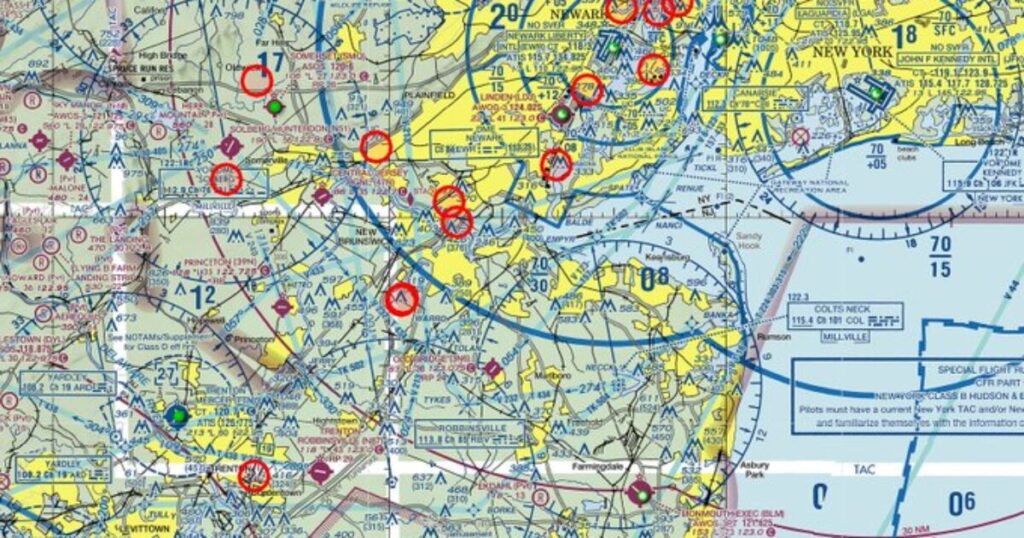The Federal Aviation Administration (FAA) has recently implemented new no-fly zone restrictions for drones in New Jersey, effective from December 18, 2024, through January 17, 2025. These restrictions cover twenty-two locations, including critical infrastructure points and areas in proximity to former President Donald Trump’s golf course in Bedminster and the Picatinny Arsenal in Wharton. Each of these zones spans a radius of one nautical mile and extends vertically to a ceiling of four hundred feet from ground level. The FAA’s announcement follows increased scrutiny of drone activity in the region, with officials warning that engaging in drone flights over these designated areas could lead to severe repercussions, including the potential use of “deadly force” against aircraft deemed to pose an imminent security threat.
The FAA’s decision to institute these restrictions stems from requests made by federal security partners. In a statement, the agency underlined the seriousness of the matter by emphasizing that unauthorized drone operations in these zones could result in interception, detention, and even criminal charges. This action reflects the heightened concern surrounding airspace security, particularly in the wake of past controversial calls from Trump addressing the Biden administration regarding drone threats. Trump’s remarks suggested a more aggressive stance against unauthorized drones, urging an immediate shoot-down policy which the Biden administration downplayed, indicating that the drones in question posed no significant threat and expressing limitations in their capability to respond.
Accompanying these regulatory updates are responses from various federal agencies, including the Department of Homeland Security (DHS), the Federal Bureau of Investigation (FBI), and the Department of Defense (DoD). Recent joint statements from these entities aimed to alleviate public alarm concerning reported drone sightings throughout the Northeast. Officials indicated that many of these sightings could likely be attributed to a mix of lawful commercial drones, hobbyist activity, and misidentified aircraft. Despite concerns from citizens, agency representatives asserted that there was no evidence suggesting a security risk posed by these drone encounters or any abnormal activity, underscoring the belief that the situation over New Jersey was well within normal operational parameters.
Specific areas that fall under the Temporary Flight Restrictions (TFRs) include towns across New Jersey such as Evesham, Hamilton, Bridgewater, Cedar Grove, and Jersey City, among others. The FAA established these TFRs as part of a broader framework defined under United States Code Title 49, which allows for the designation of airspace as “national defense airspace.” Consequently, pilots who disregarded the regulations outlined in the Notice to Airmen (NOTAM) could face a range of punitive measures from administrative penalties by the FAA to possible criminal charges under federal law.
Despite the federal government’s proactive measures, officials from the DHS reiterated that the new restrictions should not be directly correlated with the puzzling drone sightings reported recently. In fact, a DHS spokesperson informed aviation news outlets that the no-fly zones were implemented out of an “abundance of caution” and to protect critical infrastructures. The emphasis placed on the absence of direct links between these restrictions and ongoing drone sightings aims to mitigate public anxiety while enhancing the overarching security framework around essential facilities throughout the state.
In conclusion, the recent actions taken by the FAA and other federal agencies reflect a growing response to perceived aerial threats posed by drones over critical areas in New Jersey. The insistence on rigorous enforcement of no-fly zones alongside public reassurances signifies a complex dialogue taking place between national security measures and the rights of drone operators. The future regulatory landscape around drone operations will likely continue evolving, as federal authorities balance the imperatives of safety and compliance with the burgeoning use of drone technology in civilian airspace.

